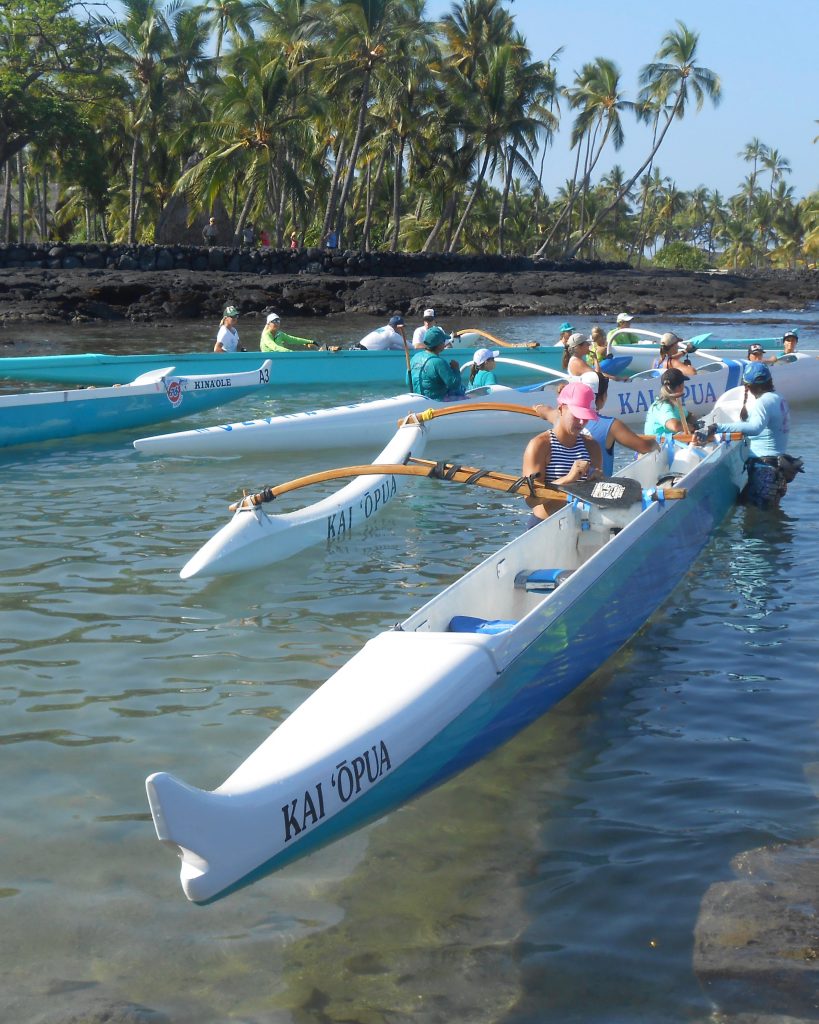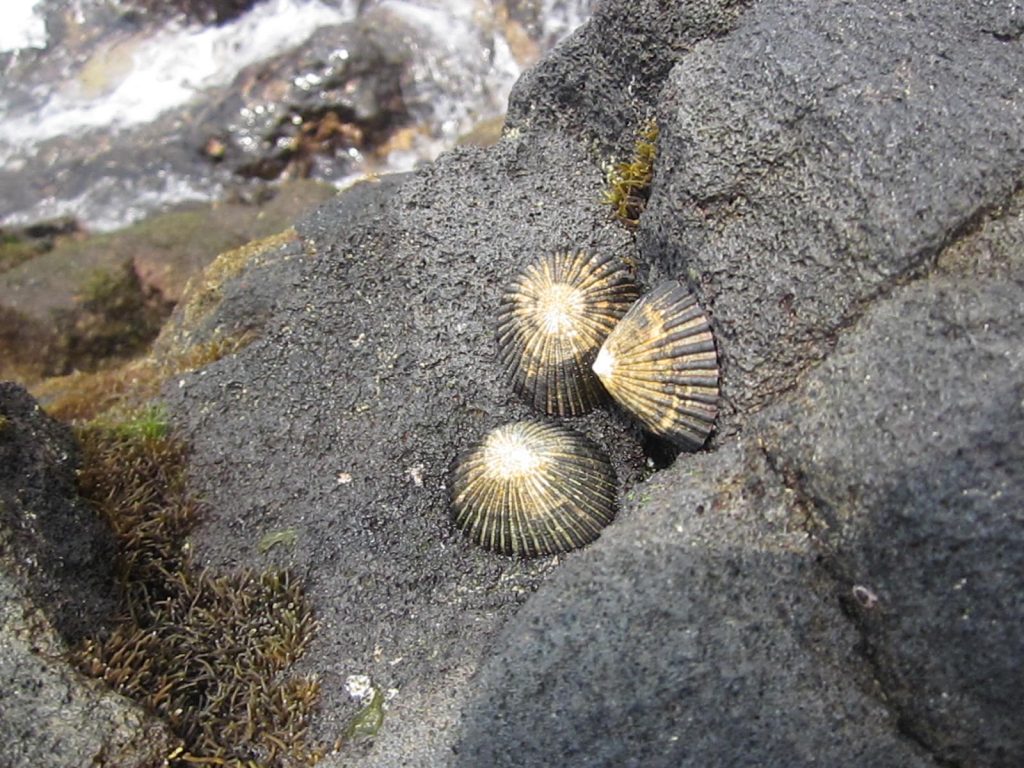
Early morning, at a boat race in Honaunau, last preparations are made before the women’s eight mile to Kealakeua bay and back.
Outrigger canoes (wa’a in Hawaiian language) have been invented some 5000 years ago in the South East Asia. In their seafaring form they were used to discover the Hawaiian Islands. The Polynesians were great seafarers and navigated without instruments.
Because stability is created by the distance between outrigger and hull, the form of the canoe can be more hydrodynamically efficient and they are therefore faster. Originally, the canoes were made of the wood of Koa trees. Today, they are made of fiberglass. You will still find traditionally made outrigger canoes in races, but they will race in their own category.
The most common canoe in sports is a six-person outrigger canoe. Outrigger canoes are paddled forward on alternate sides. Paddlers switch sides simultaneously on a call from a designated caller. The steerer, of course, can paddle on either side as needed.
Each paddler has an important role – In the back of the canoe sits the steerer. In the front seat the stroker, (s)he is responsible for setting the pace. Strong paddlers are placed in the middle of the boat. One of them will be designated a caller. In long distant races paddlers will be exchanged from the water, transported there from an escort boat.
Outrigger canoe racing is the state sport of Hawaii and an interscholastic high school sport. The length of a race ranges from short sprints to long distance races. The most famous races are the Molokaʻi Hoe, a 43 mi (69 km) men’s race from the island of Molokai to Oahu, Na Wahine O Ke Kai (same race for women) and the Queen Liliʻuokalani Race held near Kona on Big Island.
